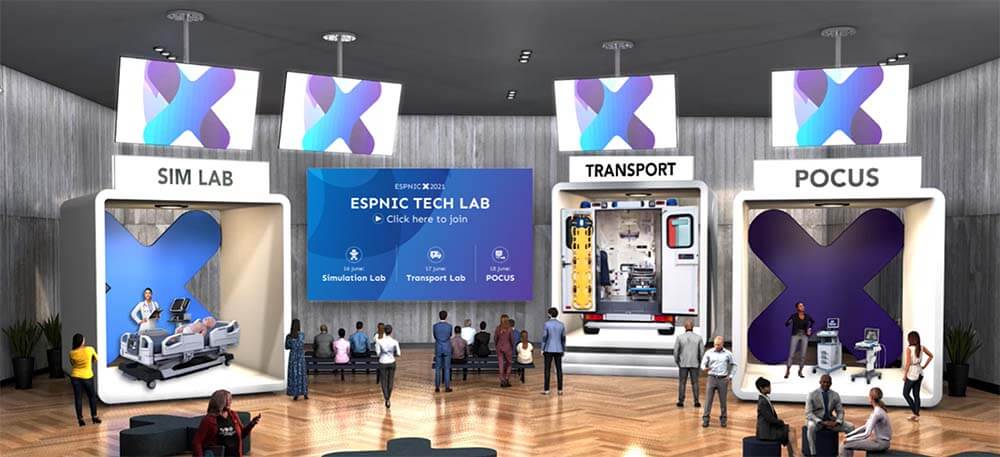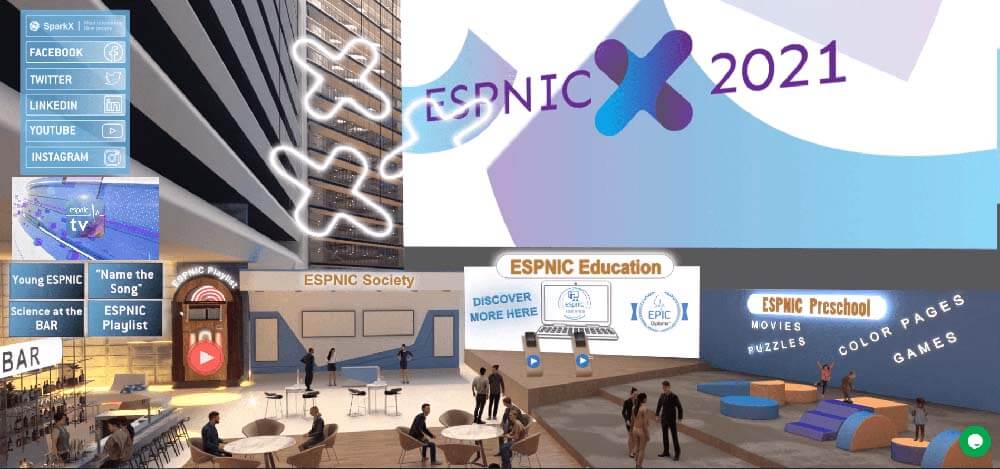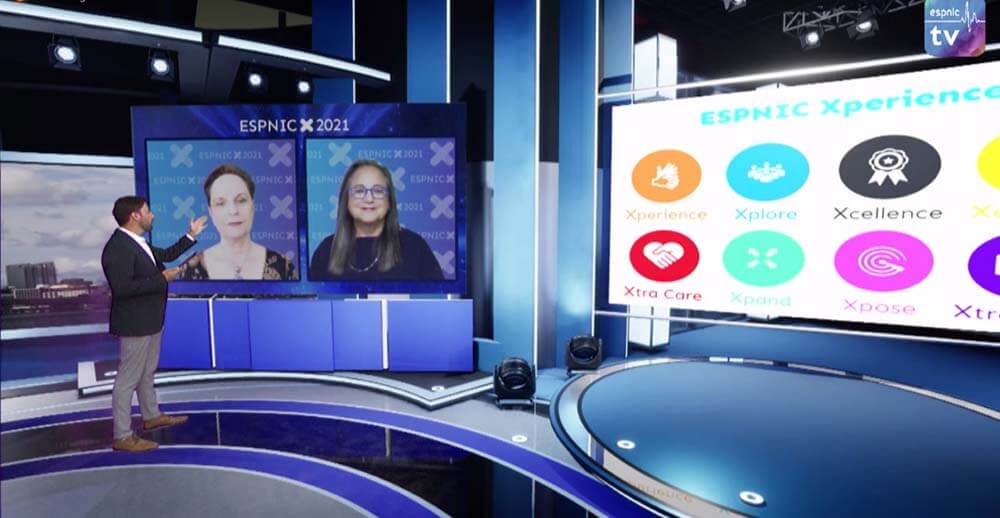
ESPNICX — a fully digital event — put an emphasis on the participant experience. That meant providing more compelling on-screen activities and lifelike environments.
After its 30th annual meeting was held in June 2019, the European Society of Paediatric and Neonatal Intensive Care (ESPNIC) team had big plans for its 2021 in-person event. It would place more emphasis on content suited for members at all levels, from senior doctors to nurses to students, and give participants plenty of networking opportunities — this is a group that loves to connect. Of course, the COVID-19 pandemic had other ideas.
“The plan was to do a good, high-level program,” said Limor Cunia, director of client accounts for Kenes Group, which produces ESPNIC’s annual event. “We planned to have an in-person meeting that was very interactive, with a lot of voting and interactive sessions. Back then, we didn’t even think we were going to have to deal with COVID.”
But when it became clear the pandemic would prevent ESPNIC’s audience of 750 members — ranging from neonatal intensivists to allied health professionals from 52 countries — from attending an in-person event set to take place in Athens, Greece, ESPNIC postponed and then ultimately chose to move the event to a fully virtual experience that took place June 15–18, 2021. Despite the move to a virtual meeting space, the organization’s aim for a new and improved program never changed, Cunia told Convene, “and that’s where we started to think creatively.”

The “ESPNIC Hub,” a lifelike virtual lounge that included different areas for attendees to navigate to, was at the center of the virtual event.
Grabbing a (Virtual) Drink
ESPNIC and Kenes Group were aware that many professionals were experiencing Zoom fatigue by the middle of 2021. With the return of some in-person events at that point in time as well, the organizers felt the need to differentiate the experience from its competitors and make it a more actively participatory event for its 800 virtual attendees. And so ESPNICX was born — the “ESPNIC Xperience” that encouraged virtual attendees to “xperience, xchange, xplore, and xpand.”
At the center of the virtual event was the “ESPNIC Hub,” a lifelike virtual lounge that included different areas for attendees to navigate to, such as the bar, which hosted a “Name That Song” game and late-night, informal “Science at the Bar” sessions where ESPNIC faculty shared their expertise; a jukebox where attendees could add their favorite songs to the event playlist; and ESPNIC Preschool, where parents could find interactive elements to entertain their children while they were busy learning.
“At the time of the event, there were many countries in lockdown and there was no school. As a mother, I know how difficult it is to have the kids at home and the need to occupy them,” said Cunia, who is based in Tel Aviv, Israel. “I wanted the participants to be able to join the virtual meeting, enjoy the live sessions, and interact in sessions, and therefore decided to have cool activities for children like color- ing pages and games.”
The ESPNIC Hub also featured a designated area for its younger members to gather and network one evening. “At every in-person meeting, the young members meet in a bar or restaurant, have drinks, and talk about what they expect from ESPNIC and the field,” Cunia said. “So, we had a separate session for them that was led by an ESPNIC trainee.”

Part of the ESPNICX experience was presenting speakers who interacted with a host at a broadcast studio in Tel Aviv.
Not ‘Just a Presentation’
On the education side, ESPNICX featured some formats that kept attendees “buzzing” during the live event days, Cunia said. “We actually didn’t add new sessions to fit the virtual format,” Cunia said. “We did the opposite — tried to keep all the sessions [from the originally planned in-person event] in the virtual program, as we felt they were too important to drop.”
For some sessions, ESPNIC made use of a professional broadcast studio in Tel Aviv — designed to match the ESPNIC aesthetic and called “ESPNIC TV” within the program — where speakers would join in via Zoom. It differed from a static presentation in that the speaker and audience were able to interact with one another in real-time with the help of an in-person moderator at the studio.
“Although virtual meetings were the only option available for this exchange of information, we wanted to deliver a different experience. The speakers could see the audience, and the audience could see the speakers,” Cunia said. “And then the moderator had an earphone with the head of production telling him, for example, ‘You have Eric from Canada who wants to ask a question,’ so he knew to approach that participant. It felt less like a Zoom call — audience members were actually facing the speaker and interacting live with them. And for the speakers, they felt like they were actually presenting in front of an audience.”
A moderator also led “Meet the Expert” sessions, Cunia said, when two professionals from different parts of the world answered questions specific to their expertise. “It wasn’t just a presentation,” Cunia said. “It was really meeting the experts, who were touching on the most important topics in their field. The community felt that they needed to be online and not miss out on these sessions, even though they could catch up at a later stage.”
The feedback from participants about the interactive elements of ESPNICX, Cunia said, was excellent, making that extra effort worth it. Her advice to event organizers? “We need to be able to act fast, be flexible, and most of all, be creative,” she said. “We need to understand that times have changed, and not be afraid of implementing new ideas.
Live From Spain
Every ESPNIC meeting features hands-on courses that include Point of Care Ultrasound training (POCUS) with live patient demonstrations. Since ESPNIC’s 2021 virtual experience couldn’t provide that level of interactivity, event organizer Kenes Group weighed options on how to best provide this education.
“We said, ‘Yeah, it could just be a theoretical course,’” Kenes Group’s Limor Cunia told Convene. “But that would be more of the same.”
Instead of transforming POCUS into a traditional education session, two speakers were livestreamed from a hospital in Spain for a demonstration they performed on a mannequin.
“It was really nice,” Cunia said, “Because participants could see on the screen how POCUS should be performed, and then there was a Q&A after.”
Casey Gale is associate editor at Convene.
